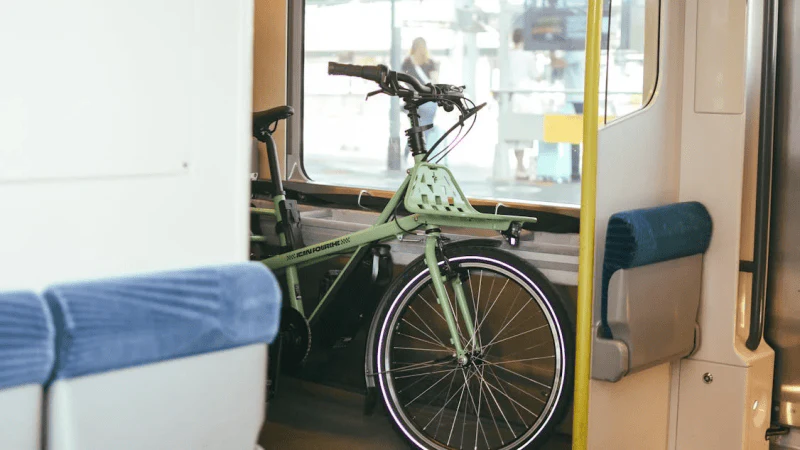The Rise of Electric Bikes in the UK
Across the United Kingdom, cycling has always played a significant role in daily travel, from leisurely rides to serious commuting. In recent years, electric bikes have become a game changer for both urban and rural riders. They combine the traditional benefits of cycling with the added advantage of motorized assistance, making long or uphill rides more accessible. This surge in popularity has naturally led to one pressing question for many riders: can you take an electric bike on a train in the UK? The answer is not as straightforward as one might expect, as it depends on policies, space, and preparation.
National Rail Policies on Electric Bikes
Train companies in the UK generally allow bicycles on board, but when it comes to electric models, things become more specific. Most electric bikes are treated like standard bicycles, provided they meet weight and size requirements. However, not all trains are equipped with dedicated cycle spaces, and some operators enforce restrictions during peak travel hours. Certain services may also have limits on the number of bikes permitted on a single train. Riders are advised to always check the policies of their train operator before traveling. Understanding these rules in advance ensures smoother journeys and avoids unexpected inconveniences at boarding time.
Size and Weight Considerations
Unlike folding bikes, most electric bikes are heavier and bulkier due to their battery and motor systems. While this doesn’t make them impossible to bring on trains, it does pose practical challenges. Lifting an electric bike onto a platform or into a carriage can be difficult, particularly on older train models with limited accessibility. Operators typically prefer bikes that can fit into designated storage spaces without causing obstruction. As electric scooter isinwheel users have discovered, portability is an important factor when choosing personal electric mobility solutions. Compactness and weight often dictate whether a model is train-friendly or not.
The Role of Folding Electric Bikes
Folding electric bikes have transformed the way many commuters navigate mixed travel. Their collapsible design allows them to be carried as luggage rather than registered as bicycles, bypassing some of the restrictions imposed on larger models. For train operators, this means fewer concerns about blocking aisles or cycle storage limitations. For passengers, it translates to flexibility and convenience. Folding designs also make transitions between train rides and final destinations much smoother. Just like the innovation found in electric scooter isinwheel products, folding electric bikes reflect how modern engineering caters to real commuting needs.
Safety Regulations and Battery Restrictions
Another aspect to consider when traveling with an electric bike is battery safety. Lithium-ion batteries, commonly used in these bikes, are generally safe when transported correctly. However, concerns about fire risks have led to specific regulations, especially on international flights and some ferries. Within the UK rail network, most train operators do not restrict the transport of e-bike batteries, but they expect passengers to ensure that batteries are securely attached and not damaged. Riders should also avoid charging their bikes while on the train. Awareness of these safety standards not only ensures compliance but also contributes to safer shared journeys.
Practical Tips for Traveling with Electric Bikes
Successfully taking an electric bike on a train requires planning and preparation. Booking tickets in advance and reserving a cycle space where possible can reduce the stress of traveling. Arriving early at the station ensures enough time to locate bike-friendly carriages. Carrying a cover for the bike is also recommended, as some operators require bicycles to be bagged, particularly on long-distance journeys. For those who regularly commute, considering a lighter model may make daily transport far easier. Similarly, investing in well-designed gear, much like the accessories offered with electric scooter isinwheel products, can improve convenience and efficiency when traveling.
Alternatives for Commuters and Travelers
While trains and electric bikes make a practical combination, there are times when restrictions, space limitations, or peak-hour rules make traveling with a full-sized bike difficult. In such cases, riders often turn to alternative solutions. Folding bikes, e-scooters, or even bike-sharing schemes at stations can help bridge the gap between train stops and final destinations. These alternatives are particularly useful for last-mile connectivity in busy city centers. Just as electric scooter isinwheel has provided innovative options for riders looking for compact and efficient mobility, the cycling industry continues to expand possibilities for those who need multi-modal transport solutions.
The Future of Integrated Transport in the UK
As the UK government pushes for greener travel and reduced carbon emissions, integration between cycling and public transportation is becoming a priority. More trains are being designed with larger cycle spaces, and infrastructure projects aim to make commuting seamless across different modes of transport. Policies that once seemed restrictive are gradually adapting to support the growing use of electric mobility. In the future, we may see dedicated storage areas for electric bikes, improved station facilities, and better support for folding models. This shift mirrors the broader acceptance of modern mobility technologies, including compact solutions like electric scooter isinwheel, which symbolize the future of eco-friendly travel.
Final Thoughts:
The answer is yes with preparation. Most UK train services allow electric bikes, provided passengers follow operator guidelines, respect size and weight limits, and secure reservations where needed. Folding models offer the greatest flexibility, while larger bikes require careful planning. Ultimately, the experience reflects the broader transition toward sustainable and integrated transport. For riders, the journey doesn’t end at the station; it continues through innovations in cycling, e-scooters, and other mobility solutions that make travel more accessible, efficient, and environmentally responsible across the UK.














